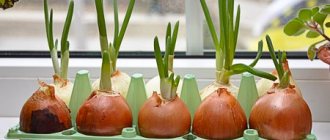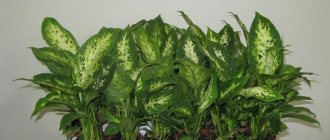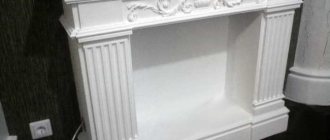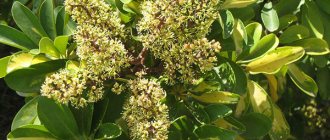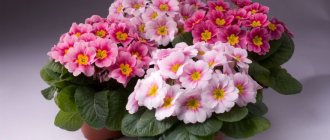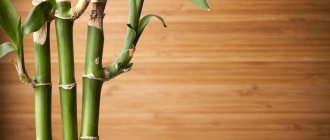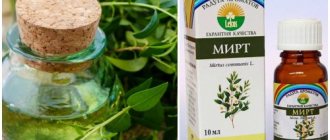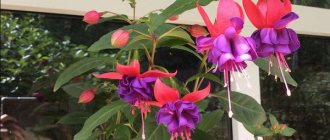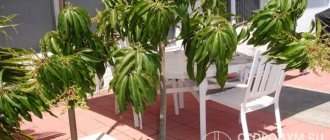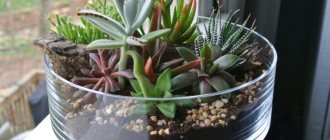Unlike most other plants, Dieffenbachia grows from the top, and the leaves below gradually die off. Thus, a trunk appears, and the evergreen plant becomes similar to a tree. Unfortunately, then all the charm disappears.
The height of such a tree can reach several meters, but it is quite fragile and can break from strong bending or shaking. If this happens, don’t worry: you need to cut off the top and root it or cut the stem into separate shoots, planting it in the soil mixture, and you’ll get many new individuals.
Home care
The evergreen pet is thermophilic and afraid of drafts. At home, it blooms quite rarely, but by creating favorable conditions, annual flowering can be achieved. Growing an unpretentious and low maintenance bush is very simple. Even a novice florist can cope with this task.
Location and lighting
When determining the location, you need to take into account the absence of drafts and sudden temperature changes. Fast and cold air flows will negatively affect the appearance of Dieffenbachia.
Although the evergreen friend is light-loving, window sills facing south are not the best place for it. Direct rays of the sun and their prolonged exposure are detrimental to delicate leaves. In this case, you need to put a partition between the window and the pot or hang a tulle curtain. Such measures will prevent the occurrence of burns. In principle, the tropical guest is quite shade-tolerant, but it requires bright lighting to maintain the beauty of the leaves.
Temperature
The flower is very thermophilic. With abundant and regular watering and spraying, it feels calm and comfortable at a temperature of +30-32C. However, the optimal temperature for it is +19-22 degrees. The temperature must not be allowed to drop below +10C, otherwise the leaves will immediately fall off and the flower will begin to wither.
Watering
The method of maintaining the moisture level for Dieffenbachia is not complicated, but, nevertheless, requires constant monitoring of the condition of the substrate. Watering should be plentiful, but it should be done only when the soil dries out. Leaving a flower unattended during a vacation or business trip will also not work without unpleasant consequences.
Overwatering has a detrimental effect on the plant. In case of over-watering, you need to remove the entire lump from the flowerpot and blot it with paper napkins until they are barely damp, then place it back in the flowerpot. Naturally, in winter, watering is reduced significantly.
Air humidity
Dieffenbachia is a tropical plant and its usual humidity is 90-100%. Dry air is definitely detrimental to a green pet. In this case, the tips of the leaves of the plant begin to turn yellow, and if it is in the flowering stage, the buds will fall off. The poor thing will begin to wither.
Before you start increasing the humidity, you need to think about the fact that there are people living in the apartment whose comfortable humidity is 45-55%. For a South American guest, such a range is unacceptable. Of course, if a separate place is allocated for the green area, then there is no point in worrying about humidity. But what can you do if the potty is, for example, in the bedroom:
- use humidifiers or evaporators;
- place an aquarium or florarium nearby;
- organize a green corner, concentrating all the moisture-loving plants in one place.
The soil
The substrate option can be said to be classic:
- 50% turf land;
- 20% leaf;
- 20% peat;
- 10% sand.
The presence of drainage is a necessary condition. For this purpose, you can use charcoal or brick chips.
Feeding and fertilizers
Unpretentiousness to conditions does not mean that Dieffenbachia does not need to be fed and fertilized. It requires seasonal feeding in spring and summer. Use liquid mineral and organic fertilizers that do not contain lime. They need to be applied once every 10 days and only half of the recommended dose.
If the plant has whitish leaves, then this color will be lost from the nitrogen available in the nutrient mixtures, and the leaves will turn greenish. It is not recommended to fertilize such plants with organic matter, and nutrient minerals are applied once every 20 days.
Transfer
There is no need to think about when to replant Dieffenbachia. This will be visible when the roots fill the container. When replanting, select a pot that is a couple of centimeters in diameter larger than the previous one. They roll over the bush with the entire earthen lump; it is enough to just clear it of grains of old drainage.
A necessary condition for transplantation is the addition of a slightly slightly acidic substrate, consisting of the following proportions:
- 50% leaf soil;
- 20% peat;
- 20% fine sphagnum;
- 10% river sand.
Trimming
This method of plant care is performed if:
- the plant quickly began to grow;
- leaves or stem are damaged;
- The cats started nibbling on him. Yes, it turns out they love to do it!
Methodology and safety measures:
- Prepare the knife or blade by treating it with alcohol.
- Cover the cut area with a napkin to prevent the juice from splashing into your eyes, as it is poisonous.
- Treat the cut area too, removing any oozing juice.
- Work with gloves.
Crown formation
The main way to form a lush plant is to cut off the top and plant it in the same pot. It grows back, cut it again and plant it right there. In this way you can get a lush and beautiful bush, without a trunk.
Plant varieties
This plant has become very popular, since the Dieffenbachia flower requires minimal care at home and easily adapts to almost any environment.
The following species are usually grown as indoor crops:
- Lovely (Dieffenbachia Amoena) is a tall tree-like plant with a succulent, fleshy stem. Dieffenbachia leaves are green, large (up to 50 cm), elliptical, with white veins in the center. The variety is shade-tolerant, easily adapts to unfavorable conditions, and grows well in houses with central heating.
- Camilla (Dieffenbachia Camilla) is a very unpretentious large-leaved bush variety. The height of an adult plant can reach two meters. The lanceolate-shaped leaves have a light green or cream tint, with a dark green edge around the edges. With age, the trunk of this Dieffenbachia becomes bare, which gives it a rather unaesthetic appearance, so from time to time the flower must be renewed by cutting off and re-rooting the upper part. In its natural environment, Dieffenbachia blooms, but in indoor conditions this happens extremely rarely.
- Spotted or painted (Dieffenbachia maculata) - the stems of this plant can reach a meter in height. The leaves have an oblong shape with a slightly pointed tip, grow up to 40 cm in length and reach a width of 12 cm. The color of the leaves and the patterns on them can be very diverse - it depends on the type of flower.
- Seguina (Dieffenbachia Seguina) - very similar to spotted Dieffenbachia, with the only difference being that the leaf of the latter is somewhat narrower and covered with a much larger number of spots.
- Leopolda (Dieffenbachia Leopoldii) is one of the most popular varieties for home cultivation. The leaves are dark green, elliptical, with white veins in the middle. The petioles are light green with purple spots and are several times smaller in size than the leaves.
- Oersted (Dieffenbachia Oerstedii) is a variety with single-color, heart-shaped or pointed leaves, reaching 30−35 cm in length. The central vein is light and clearly visible.
- Reflector (Dieffenbachia Reflektor) is the most colorful species, resembling arrowroot. The leaves are oval-shaped, dark green with a purple tint. Each leaf is covered with green or yellowish spots and has a pronounced central vein.
- Green Magic (Dieffenbachia Green Magic) is a dense bush of compact size with unusual bluish-green leaves. It is one of the hybrids bred on the basis of the Ørsted variety.
- Compacta (Dieffenbachia Compakta) is a neat and miniature (no more than 40 cm in height) bushy variety. The leaves are light green, covered with specks along the central vein.
Reproduction
To increase the number of plants, you can use non-lignified apical cuttings. They form roots intensively and well in water. And cuttings from the stem, quite thick and hard, which are prepared during the rejuvenation of old plants, take root best in the soil, but this process is longer. You can dig a piece of stem with several internodes with buds into the ground, then you can get several sprouts at once.
Leaves
Sprouted, healthy leaves from the tops are used. Rooting should be carried out in water, and it is better to immediately plant the lower large leaves in light soil in a permanent place. The soil must be constantly moistened. Such reproduction takes a fairly long period of time and requires careful care of the pets.
Cuttings
Cut off the bare trunk, leaving a short shoot of about 10 centimeters. Then cut the cut part into pieces with one bud, dry it, dig it horizontally into a mixture of peat and sand, bud up, and cover with film. The rooting process should take place at a temperature of +25 degrees, and when roots appear, transplant into the usual mixture for Dieffenbachia.
The remaining part in the pot is also used. After some time, leaves will appear on the node; you need to cut the stalk and plant it in the ground. This can be done several times, depending on how many nodes remain on the remaining process. The main condition for propagation by cuttings is protection from direct sunlight.
Seeds
Propagation by seeds is carried out only at a professional level, when it is necessary to develop new varieties.
Dividing the bush
The bush of the plant can be divided into several parts. In this case, you should act very carefully so as not to damage the roots. Plant them in different pots where the plants will grow continuously.
Harm of Dieffenbachia: myth or reality?
Dieffenbachia is a very spectacular plant, but many gardeners refuse to plant it at home. This is because there is a widespread belief that Dieffenbachia is supposedly extremely toxic. But it's not that scary. Dieffenbachia juice actually causes irritation to the skin and mucous membranes. How does this manifest itself? Skin exposed to Dieffenbachia juice (for example, when dividing cuttings) will turn red and itch. It is enough to wash off this juice with plain water and everything will pass. Perhaps allergy sufferers will have a worse time and the redness will be more significant. That's all! Nothing fatal. Are you afraid of itching? Wear gloves when handling Dieffenbachia; its juice does not corrode rubber.
Parents of small children or animal owners think more seriously about whether it is possible to keep Dieffenbachia at home. What to say? Many cats happily gnaw the lower leaves of Dieffenbachia. And they live happily ever after. Although, of course, it’s better not to take risks and, if you notice a chewed leaf, monitor your pet’s well-being. And if anything happens, take it to the vet! Although, with a greater degree of probability, Dieffenbachia will not cause any harm to the animal. Rather, on the contrary, the plant risks losing its decorative properties due to the taste preferences of your cat.
As for children, it is, of course, not worth conducting experiments. Place the Dieffenbachia out of reach of a small child. When he grows up, explain that this plant is poisonous and you cannot tear its leaves, much less put them in your mouth. There may be a burn to the mucous membrane, which is especially dangerous for allergy sufferers.
Thus, the harm of Dieffenbachia is a relative value. But the benefits are obvious. This large size has amazing properties to absorb various air pollutants, such as toluene, xylene, formaldehyde, benzene ( Ficus Benjamin ). This means that the air in the room where Dieffenbachia grows will be free of these chemicals. But that is not all. Dieffenbachia, which has large leaves, is capable of releasing large amounts of oxygen and ionizing the air. And lastly, again, the large leaves of Dieffenbachia evaporate a large amount of water from their surface, and accordingly, increase the air humidity in the room.
Diseases and pests
When falling leaves appear and the plant becomes lethargic, you can guess that the bush is affected by rot. The main cause of plant disease is excessive watering; the soil is constantly wet, even with little watering. The solution is to clean the roots from rotten parts and excessively wet soil, treat the roots with potassium permanganate, ground cinnamon or crushed coal.
The most common plant pests:
- spider mite - the stems are entangled in cobwebs, the cause may be very dry air;
- Scale insects or false scale insects - brown spots and sticky coating appear on the leaves;
- Mealybug - leaves are covered with cotton wool-like fluff.
The most common methods of rescue and treatment:
- treatment with soap or garlic solution;
- washing with Actellik or Karbofos;
- spraying with beer.
Lighting
In the wild, the plant lives in tropical forests under the canopies of tall trees. Therefore, direct sun is destructive for Dieffenbachia . If a flower is exposed to the sun, its delicate leaves get severe burns. The optimal lighting for it is light partial shade.
Dieffenbachia also grows well in bright but diffuse lighting. It should not be placed in the shade. Lack of lighting will cause excessive elongation of the shoots and their severe weakening. With a lack of light, a flower quickly loses its decorative effect.
In winter, Dieffenbachia most often suffers from insufficient lighting. You should move it to the most illuminated southern window sill. You should not be afraid of direct sun in winter; during this period it will not harm the flower.
Care errors
The most common mistakes in caring for Dieffenbachia are:
- unsystematic watering (the leaves turn yellow and dry out);
- too dry air;
- excess fertilizer;
- the plant is in the shade (elongated stem);
- Temperature too high (leaves smolder).
Description of the plant
The plant is truly beautiful due to its foliage. They are large and unusual in shape. The colorful pattern makes them very elegant and decorative. Interspersed on the sheet of different configurations and different tones: yellow, cream, light green.
The stem of the crop is strong. The existing species of Dieffenbachia Zrsteda has green leaf blades and a bright white pattern. Varieties of the species may have completely white foliage or a slightly yellowish tint.
Such a plant in the interior creates a festive look. It brings benefits. Dieffenbachia is able to cleanse the air of various kinds of toxins, such as xylene, benzene, formaldehyde. This plant is indispensable when living in polluted urban air.
That's why Dieffenbachia at home is a huge benefit. The plant is often recommended for cultivation even for beginners in indoor floriculture. Dieffenbachia is easy to care for.
Folk signs
Despite its beauty and beneficial properties, the plant has a bad reputation among superstitious people. In their opinion, the signs of the presence of Dieffenbachia in the house are as follows:
- Causes quarrels and divorces.
- The bride will not be able to find the groom.
- Frequent absence of guests.
- Affects male potency.
- Promotes adultery.
- Discourages the desire to get pregnant.
- Produces health problems.
- Provokes poverty in the family.
- Possibility of death of domestic animals.
Why is it dangerous?
More than 150 years have passed since Dieffenbachia captivated people with its splendor of shape and variegation of leaves. The fact that the plant poses a danger to human health was discovered only in the 20th century. Studying plants of the arid family, scientists determined that most representatives of this group contain a chemical substance in the juice of stems and leaves - calcium oxalate.
If it comes into contact with the mucous membranes of the eyes, nose, mouth, or gastrointestinal tract, the juice causes extremely unpleasant reactions:
- a feeling of pain and burning in the eyes;
- burning pain and swelling of the mucous membrane when it gets into the nose and mouth;
- nausea, acute and painful spasms when the substance penetrates the gastrointestinal tract;
- irritation and itching on the skin is caused by the plant juice in adults and children suffering from allergies.
The impact of toxins on the body occurs at lightning speed. It is necessary to provide first aid to the victim and seek qualified help from specialists at the first signs of deterioration in health:
- dizziness and headache;
- the appearance of weakness, sweating;
- cramps in the abdominal area;
- sore throat, difficulty breathing.
People suffering from allergies and bronchial asthma urgently need to take an antihistamine. Animals and small children can find themselves in such an unpleasant situation, so it is better to keep the plant out of their reach. Those who care for a flower, in order not to cause harm to their health, should adhere to simple rules:
- do not touch broken branches and stems of the plant with bare hands;
- be sure to wash your hands after contact with the flower;
- handle the leaves of the plant, wash them only with rubber gloves.
If you are vigilant and attentive to the flower, it is not able to have a negative impact on human health. Remember that Dieffenbachia is only dangerous if you touch it when it secretes juice.
Kinds
There are about 40 varieties of Dieffenbachia, but the most frequent guests in apartments are:
- Spotted. The stem is powerful, with a cap of oval leaves with a pointed outer edge, the color is green with white specks.
- Camilla. It has a powerful trunk with massive elongated leaves with a white center and a green border.
- White flame. Due to the white center of the leaf plate, it resembles a flame. The length of the leaves is up to 30 cm, width is about 20 cm.
- Leopold. It has beautiful leaves that look like an ellipse with a white vein in the middle.
Despite all the pros and cons, Dieffenbachia is a beautiful plant and many are convinced of this, despite superstitions, when they grow it in their home.
Dieffenbachia transplant
Transplantation is performed every year, usually in spring or early summer. Young plants are transplanted into larger pots - 1-2 cm larger in diameter than the previous ones. Tall, large Dieffenbachias, the further growth of which is undesirable, are left in old pots. Since replanting such plants can be difficult due to their size, it is advisable to replace only the top layer of soil with good nutritious soil, for example, with the addition of compost.
The pot for Dieffenbachia is selected according to the size of the root system
Fertilizer
The plant needs to be fed from late April to early October. For this purpose, liquid complex fertilizers for decorative foliage plants will be the best. The frequency of feeding is 2-3 times a month .
After spring transplantation, the flower does not need to be fed for 1-1.5 months. But then you should definitely start fertilizing the soil. Due to the active growth and development of the root system, the soil mixture in the pot is quickly depleted, and the plant requires more nutrients.
Liquid nutrient compositions for indoor flowers must be diluted with water so that their concentration is 2 times less than that indicated on the package. Then the flower is watered with the resulting solution. This is done only 5-6 hours after the main watering of the plant, when the soil in the pot is well saturated with moisture. Fertilizers should not be applied to dry soil, as the fertilizer solution can damage the roots of the plant.
Trimming
An important step in growing a plant is pruning. You can form a flower at any time of the year, the main thing is not to harm the plant. Basic rules for pruning Dieffenbachia:
- All parts of the plant are poisonous, and the trunk is no exception. The place where the flower is cut should be blotted with a rag and the resulting juice should be removed.
- Gloves must be used during work, after which hands are washed thoroughly.
- To prevent the development of Dieffenbachia diseases, the stems should be cut with a sharp knife or scissors disinfected with alcohol, and the cut site should be treated with crushed charcoal.
Flower pruning
The soil
Dieffenbachia grows well in soil with an acidity of 5.6-5.8. The soil for Dieffenbachia should be well permeable to water and air. This will allow oxygen to penetrate to the roots of the flower, and water will flow away without stagnating in the soil.
A universal substrate for decorative deciduous plants with the addition of peat is suitable..
When using such an earthen mixture, it is recommended to add charcoal to its composition.
When making soil for Dieffenbachia yourself, you can use the following compositions:
- 4 parts leaf soil, 2 parts peat, 2 parts dry moss, 1 part sand and 0.5 parts charcoal;
- 4 parts leaf soil, 1 part sand, peat and humus, 0.5 parts charcoal.
Similar articles:
- Propagation of Dieffenbachia by cuttings and seeds
- Causes of yellowing of Dieffenbachia leaves
Problems during cultivation
Most often, gardeners when growing Dieffenbachia encounter the following problems:
| Problem | Reasons for appearance | Elimination methods |
| Yellowing of leaf plates | Violation of the temperature regime, watering with hard water, lack of nutrients in the soil or the development of root rot | It is necessary to review the care of the plant and correct possible errors. If the problem is not solved, it is recommended to inspect the root system and, if rotting is detected, transplant the plant into a new container with fresh soil. Damaged roots will need to be removed before transplanting. |
| Stopped development | Too big pot or insufficient lighting | It is necessary to transplant the plant into a new container 2-3 cm smaller than the previous one and provide it with additional lighting using a special lamp |
| The appearance of drops on the tips of leaves | Soil waterlogging | It is necessary to reduce the frequency of watering without allowing the substrate to dry out completely. |
